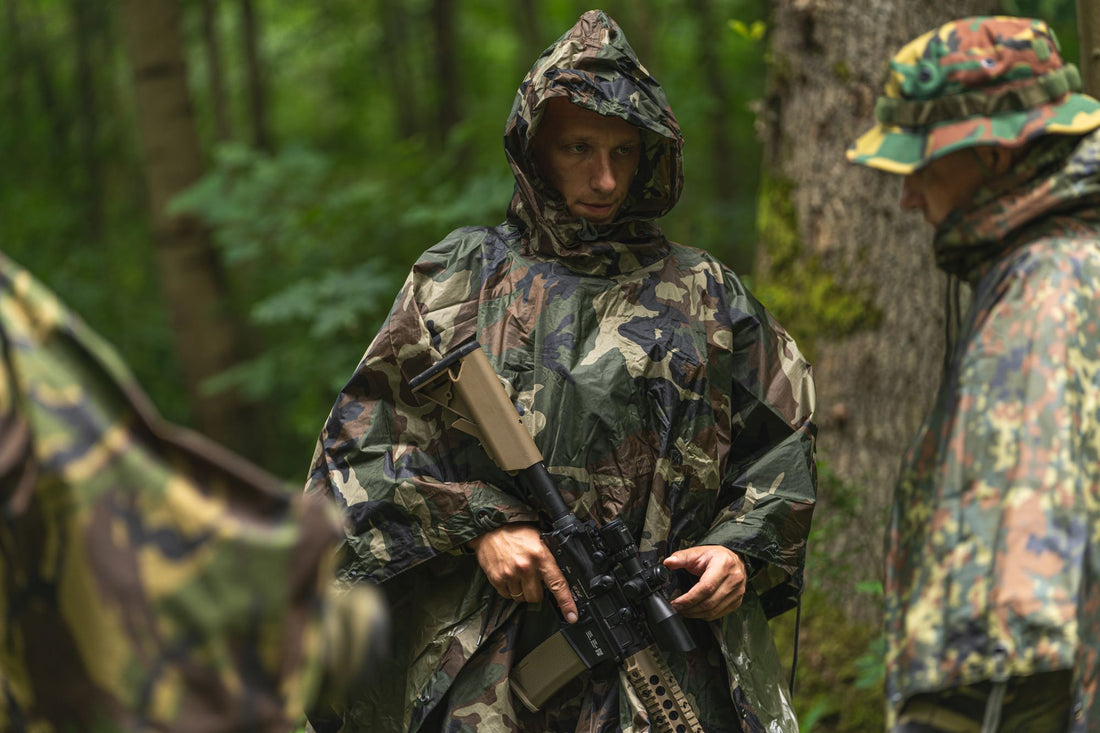
How Is Military Surplus Different From Civilian Equipment?
Share
Military surplus equipment stands out for its durability, functionality and affordability compared to normal civilian goods. Because it was designed to meet the exacting requirements of soldiers in a variety of extreme conditions, military surplus equipment often features superior materials, manufacturing methods, and performance. Whether you're a survivalist, nature lover, or just appreciate quality, knowing what makes military surplus stand out will help you evaluate its benefits and make the right decisions.
Mil-Spec Manufacturing
Military surplus equipment is manufactured according to strict " military specifications" ( mil-spec for short) rules. These standards ensure that the equipment will be durable, reliable and compliant. Military equipment must withstand extreme weather conditions, difficult terrain and intensive use. Since the survival of soldiers often depends on their equipment, this equipment is manufactured to perform flawlessly in all circumstances.
In addition, military standards such as MOLLE systems (Modular Lightweight Carrying Equipment) ensure that the equipment is easily adaptable and compatible with other military products. Civilian equipment, meanwhile, is often more focused on aesthetics or lightweight design, so it can be less reliable in extreme conditions.
Higher Quality Materials and Construction
Compared to civilian equipment, military surplus products are often characterized by strength of materials and functionality.
Key differences:
- Resistant fabrics: Military equipment often uses fabrics that resist tears and wear, such as Cordura, ripstop nylon, or strong cotton. In civilian equipment, lighter but less durable fabrics are often chosen.
- Reinforced construction: Military products often have reinforced threads, extra layers in areas that get the most wear, and extra-durable zippers or buttons.
- Weather resistance: Military products are often water resistant or treated with special coatings that protect against moisture, wind and snow. Such features are often absent in civilian equipment, unless it is specific field or technical equipment.
Designed for Functionality and Practicality
Military equipment is distinguished by functionality, and practicality is its main goal.
Key Features:
- Lots of room for stuff: Military vests, backpacks and clothing often have lots of pockets and compartments to keep essential equipment, supplies or personal items organized.
- Applicability: Many military equipment products are multi-functional. For example, the MOLLE system allows you to add additional pockets or accessories.
- Multi-Season Use: Military products such as sleeping bags or jackets are often adapted for multi-weather use, with the addition of removable layers or insulation.
- Field Tested: Every aspect of military gear, from pocket placement to fabric selection, is thoroughly tested in real-world conditions.
Durability and Longevity
One of the main differences between military surplus and civilian equipment is its durability. Military products are designed to last for years of heavy use, often making them a better long-term investment.
Highlights:
- Resistance to wear and tear: Military products withstand harsh conditions without losing their functionality, while civilian equipment often wears out more quickly under similar conditions.
- Easy to repair: Military equipment often uses easy-to-repair materials and reinforced seams, allowing users to extend the life of products with simple repairs.
Affordable Price Without Losing Quality
Military surplus equipment often offers excellent value for money compared to civilian equipment of similar quality. Because it is sold as surplus, it costs much less than new civilian products.
Example:
- A military surplus jacket made of durable materials and with insulation can cost half as much as a commercial outdoor jacket with similar features.
- Premium features such as water resistance or insulation are often included in surplus products at no additional cost.
Unique Style and Historical Significance
Military surplus equipment has a unique aesthetic appeal that has influenced popular culture and fashion.
Outstanding features:
- Camo Prints: Olive shades, camouflage patterns and functional designs have become an integral part of street fashion.
- Historical value: Some surplus items, such as those from WWII or the Vietnam period, have historical significance and are highly prized by collectors and history buffs.
Specialized Equipment
Military surplus stores often offer specialized equipment that is difficult to find on the civilian market:
- Tactical Vests: Usually compatible with the MOLLE system, they provide easy access to the tools you need.
- Camouflage Netting: Perfect for hunters, wildlife photographers, or those who want to hide in nature.
- Survival Tools: Multitools, folding shovels, and other similar items are often more durable than their civilian equivalents.
Sustainability and Lower Environmental Impact
Reselling military equipment promotes sustainability by reusing items that could otherwise have been thrown away. This reduces the need for new production and reduces the impact of production on the environment.
Conclusion
Military surplus equipment stands out for its durability, functionality and cost-effectiveness. Designed to meet the rigors of military operations, the surplus gear is the perfect choice for nature lovers, survival enthusiasts and those looking for reliable gear. While civilian equipment also has its place, military surplus offers a unique combination of quality, value and historic charm that makes it indispensable for many uses. Whether you're gearing up for an outdoor adventure or just looking for durable everyday items, military surplus gear offers unmatched performance and durability.
